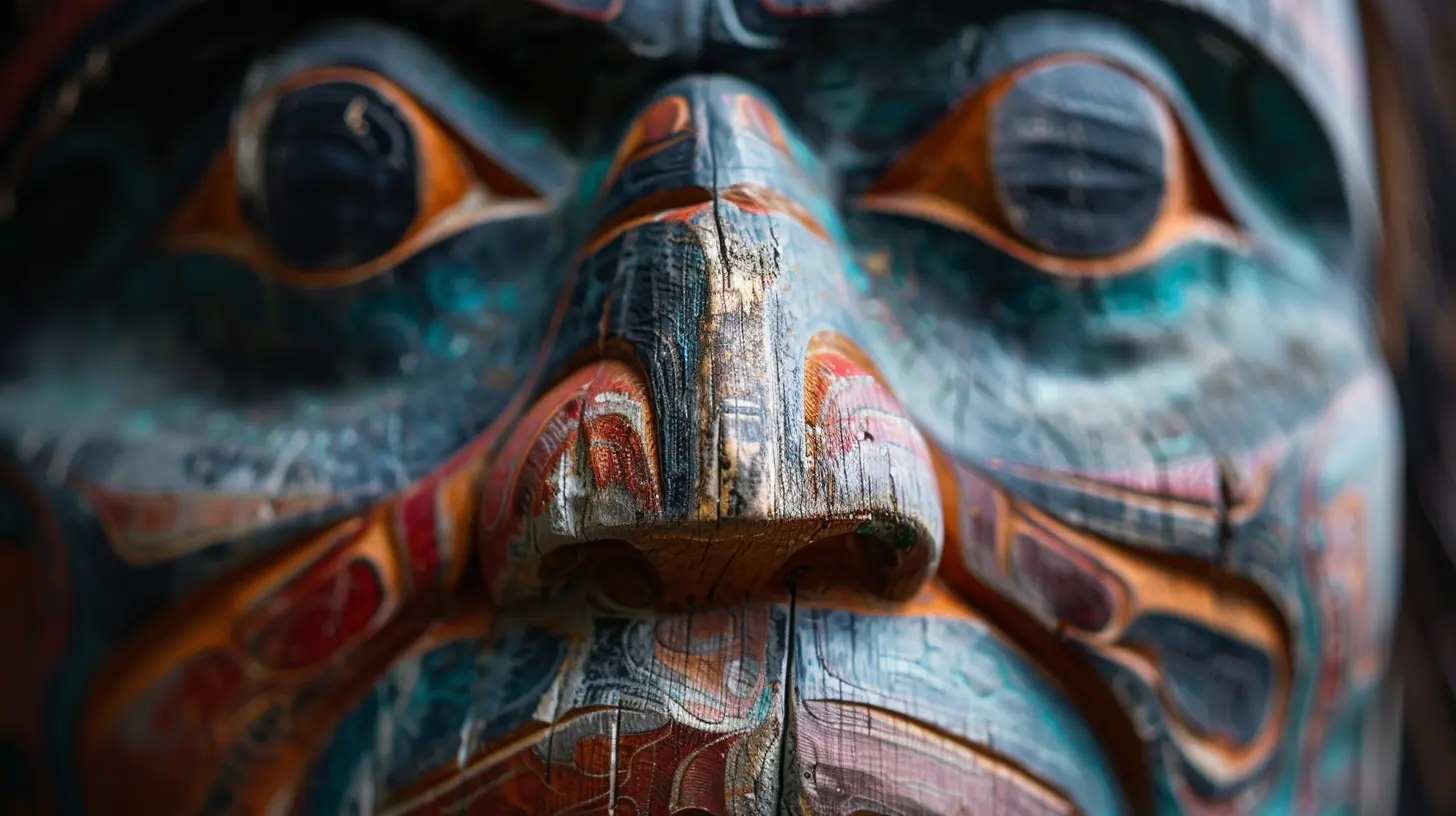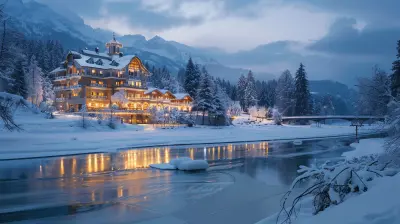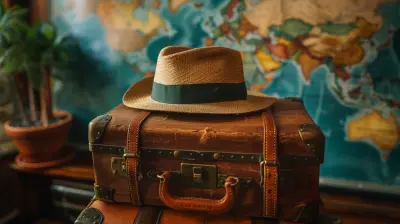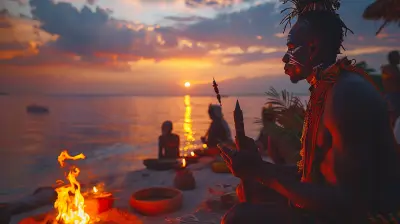A Journey Through Time with Indigenous Art and Stories
27 August 2025
Imagine stepping into a world where every brushstroke tells a tale and every symbol has a heartbeat. That’s what you get when you immerse yourself in Indigenous art and storytelling—it’s not just history; it’s a living, breathing timeline etched into the earth, painted on bark, carved into stone, whispered around campfires, and passed down for thousands of years.
In this cultural journey, we're ditching the textbook and diving heart-first into the beauty, complexity, and soul of Indigenous traditions. If your travel bucket list includes more than just pretty beaches and photo ops, stick around. This adventure takes you deep into the roots of ancient civilizations, where time bends, legends come alive, and art speaks louder than words.

What is Indigenous Art, Really?
Let’s break it down a bit. Indigenous art isn’t just "old" art. It's an entire worldview painted, sculpted, danced, and sung into existence. Originating from the first peoples of lands across the globe—from the First Nations of Canada to Aboriginal Australians, Native American tribes to the Māori of New Zealand—Indigenous art is as diverse as it is ancient.This art form goes far beyond aesthetics. It’s a spiritual practice, a method of documenting stories, a form of social commentary, and sometimes even a protest. While some pieces date back tens of thousands of years, their meanings, symbols, and styles continue to evolve, blending the past with the present.

The Power of Storytelling
Ever sat around a campfire and lost yourself in a story? Indigenous cultures have been doing just that for millennia. These aren’t fairy tales—they’re oral histories passed down from generation to generation. And they serve a deep purpose.Through stories, Indigenous communities preserve their beliefs, morals, history, and connection to the land. But here's the twist: instead of reading them in books, these stories are woven into paintings, etched onto totem poles, danced in ceremonies, and sung in hauntingly beautiful chants.
Each tale has layers. For a child, it's a fun legend. For an adult, it's a lesson about respect, survival, or the spirit world. For the elder telling it, it’s a sacred duty.

Time Travel, But Make It Artistic
If time travel was possible, Indigenous art would probably be your ticket. Wander into a rock art site in Australia, where ochre-painted walls showcase kangaroos and spirits that are over 20,000 years old, and tell me you don’t feel something ancient stir in your soul.Across North America, petroglyphs (rock carvings) tell stories about migration, battles, and celestial events. The patterns in Native American beadwork and pottery? They’re not just designs—they’re codes, passed down and reinterpreted over centuries.
And don’t even get me started on the sand paintings of the Navajo or the intricate weavings of the Andes—both ephemeral and eternal in their own right.

Why the Connection to the Land Matters
One thing you’ll notice over and over with Indigenous art is how deeply it's connected to the land. Unlike Western art, where the artist might be inspired by a feeling or a dream, Indigenous artists often use their work to represent a real, spiritual connection to place.For example, in Aboriginal Australian ‘Dreamtime’ paintings, the dots and symbols form maps—literal and spiritual—of the land, the animals, the waterholes, and the ancestors’ journeys.
Why does this matter? Because when you view Indigenous art, you're not just witnessing creativity; you're witnessing geography, cosmology, ancestry, and ecology all rolled into one.
Storykeepers and Cultural Custodians
Indigenous communities don’t just produce artists—they raise storytellers. These artists aren’t creating for fame or fortune. Many are cultural custodians, tasked with protecting sacred knowledge and presenting it respectfully.It’s not uncommon for certain stories or symbols to be off-limits unless you're from that specific tribe or have been granted permission by elders. That level of reverence demands respect and reminds us that this isn’t just art for consumption—it’s a cultural dialogue.
Festivals That Celebrate the Journey
Want to get a firsthand taste of this vibrant world? Time your travels with a cultural festival.- Garma Festival (Northern Territory, Australia): Held annually, it brings Indigenous leaders, musicians, and artists together in an open-air cultural showcase that’s part dance, part debate, and all heart.
- Santa Fe Indian Market (New Mexico, USA): One of the biggest Native American art markets in the world. You’ll see everything from jewelry to sculptures, powered by deep-rooted tradition.
- Pukapuka Festival (New Zealand): A lively celebration of Māori storytelling through performance, kapa haka, and visual art.
These festivals aren’t just events—they’re windows into Indigenous life and legacy.
Responsible Tourism: Here's How You Can Make a Difference
Thinking of dipping your toes into this timeless world? Great! But let’s do it the right way. Responsible cultural tourism isn’t just about what you see—it’s about how you see it.Here’s the golden rule: authenticity over everything. Support Indigenous-owned businesses, artists, and tour operators. Ask questions respectfully. And when in doubt—listen more than you speak.
You can also contribute by:
- Buying directly from local artists (not mass-produced souvenirs).
- Attending guided tours run by Indigenous communities.
- Sharing what you learn, without speaking over Indigenous voices.
Trust me, your experience will be so much richer for it.
Where to See Indigenous Art Around the World
Ready to pack your bags? Here are a few incredible spots where Indigenous art takes center stage:1. Uluru, Australia
Home to the Anangu people, this sacred site isn't just a massive rock—it’s storytelling in stone. Nearby, the Maruku Arts center offers insight into Tjukurpa (ancestral law) through vivid dot paintings.2. Petroglyph National Monument, USA
Located in New Mexico, this site features over 20,000 images carved into volcanic rock by Native American and Spanish settlers. Each glyph is a quiet whisper from the past.3. Te Papa Museum, New Zealand
Dedicated to Māori heritage, the museum not only showcases ancient artifacts but also highlights how Māori art forms have adapted in contemporary times.4. The Museum of Anthropology, Vancouver, Canada
Here, towering totem poles, ceremonial masks, and intricate carvings bring the stories of First Nations people vividly to life.5. Salar de Uyuni, Bolivia
Beyond the surreal salt flats, discover the colorful weavings and textile traditions of the Aymara people—each design a record of cosmic order.A Living Legacy: Indigenous Art Today
Some might assume that Indigenous art belongs in museums, frozen in time. But the truth is—it’s constantly evolving. Artists like Emily Kame Kngwarreye (Australia), Norval Morrisseau (Canada), and Jeffrey Gibson (USA) have blended traditional motifs with modern styles, creating works that both honor and challenge tradition.From murals in city alleys to fashion runways and digital installations, Indigenous creativity is thriving. It’s not about staying ancient—it’s about staying rooted while reaching out.
So, Why Should This Matter to You?
Because whether you're a traveler, art lover, history buff, or just someone who appreciates a good story—this journey through Indigenous art and stories is a reminder that human connection transcends time.It teaches humility. It teaches respect. And more than anything, it shows us that while the world spins on, the oldest stories are still the most powerful.
So next time you’re looking for a meaningful travel experience, skip the souvenir shop and sink your senses into something far deeper. Let Indigenous art and stories guide your path—you’ll come back with more than selfies. You’ll come back changed.
all images in this post were generated using AI tools
Category:
Cultural ExperiencesAuthor:

Winona Newman
Discussion
rate this article
2 comments
Macey Harris
What a delightful adventure! Exploring Indigenous art and stories feels like stepping into a vibrant time machine. Can't wait to immerse myself in these rich traditions and colorful tales! 🎨✨
November 17, 2025 at 4:16 AM

Winona Newman
Thank you! I'm thrilled you’re excited to explore the rich tapestry of Indigenous art and stories. It truly is a vibrant journey! 🌟
Flora Vance
This article beautifully captures the rich tapestry of Indigenous art and stories, emphasizing their timeless significance. A must-read for those seeking deeper cultural understanding. Thank you for sharing!
August 27, 2025 at 2:19 PM

Winona Newman
Thank you so much for your kind words! I'm glad you found the article meaningful and insightful.


